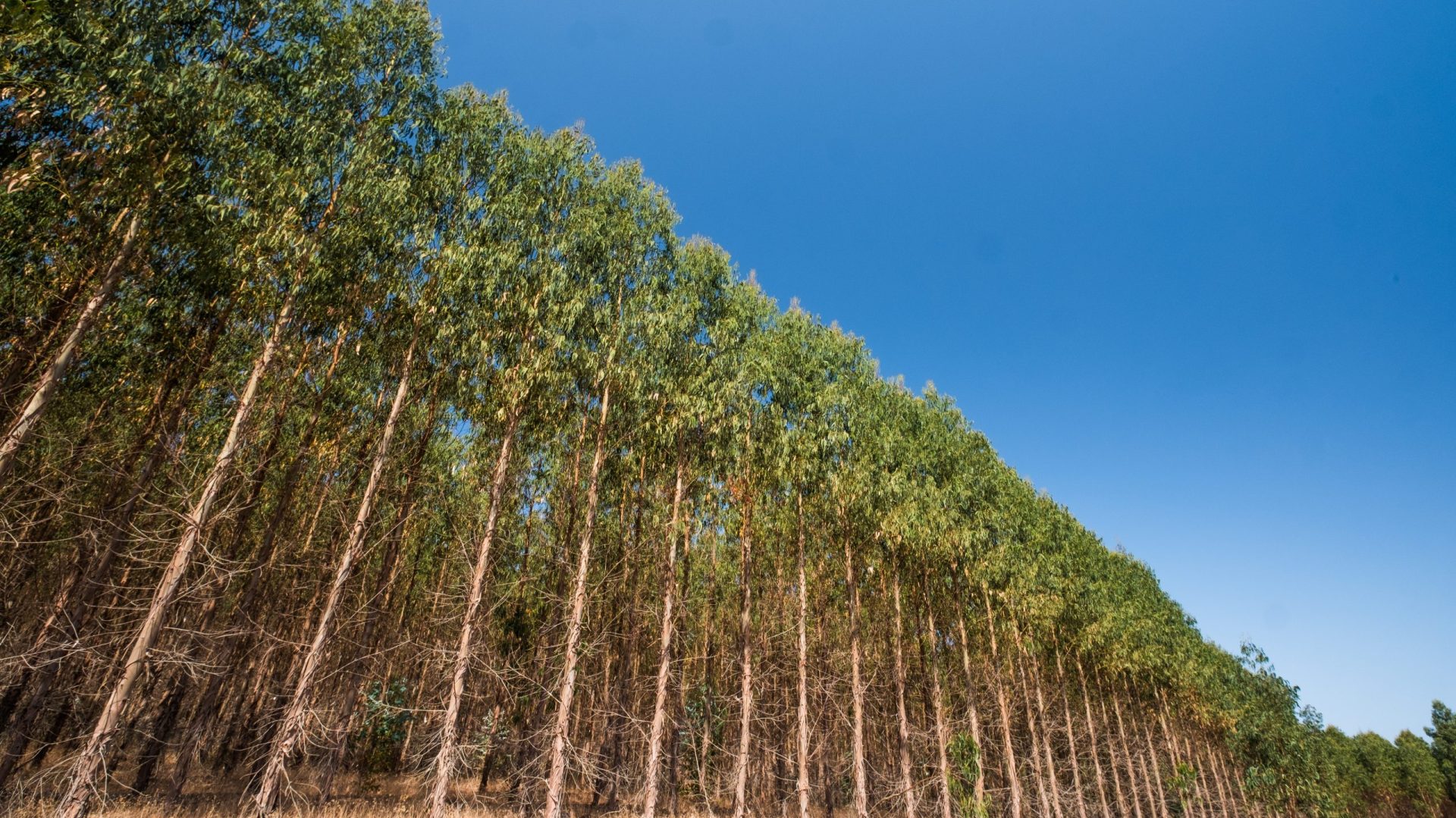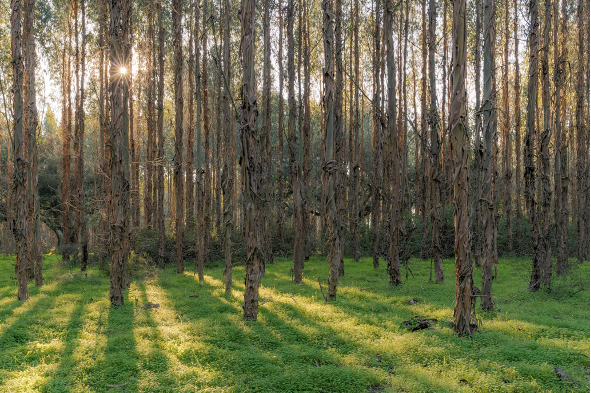Eucalyptus is particularly important in the forestry, social and economic sectors. Know more about The Navigator Company’s eucalyptus, how it fits in the forest mosaic, and how production and nature preservation measures can go hand in hand.
Multifaceted and with huge potential, eucalyptus has been used in Portugal since the 19th century and plays a prominent role in the forest economy. Its productive function meets the growing demand as a result of population increase and demand for goods and services and non-renewable raw materials, namely of fossil origin.
These trees also assist the preservation of natural forests and other forest species, in line with nature preservation measures. Good forest management helps eucalyptus and other forests coexist in the natural landscape. Its responsible management helps preserve natural resources and biodiversity.
Eucalyptus in the forest mosaic
The importance of eucalyptus forests does not end here: It is rather part of a living mosaic that, despite its main production focus, has the mission of preserving the conservation values of the resources present there and its biodiversity. Ensuring good forest management means ensuring the existence of other species of flora or fauna, areas for shelter, food, reproduction and passage of many species of migratory birds.
Eucalyptus forests go through many stages, starting with land preparation to accommodate a new plantation. Young eucalyptus forests have between one and four years of growth. After the developed eucalyptus forests, with trees aged between four and eight years, follow the adult eucalyptus forests, with trees aged between eight and twelve years. At the end of this period, trees are ready for cutting, thus ensuring the sourcing of raw material, a process which is different from deforestation.
The Navigator Company’s eucalyptus forests are part of a diverse landscape mosaic in which there are other types of forests – some for wood production, such as poplar forests and pine forests, but also cork production, such as cork oaks and cork oak forests. Other areas focus on fruit production, e.g. stone pine forests and small traditional olive groves, along with areas for arbutus harvesting and cattle pasture.
These diversified properties, where eucalyptus forests are predominant include conservation areas aimed at promoting the good conservation status of habitats and species that occur there, ensuring their maintenance and the improvement of ecosystem functions and services.
The location of production forests and the protection of their watercourses allows for a vast array of tree and shrub species and animals, creating habitats with different characteristics that ensure the existence of rich biodiversity and help reconcile landscape and recreational values. Preserving and restoring the natural values in these areas is highly relevant and its proper management ensures s the coexistence of areas focused on culture and leisure, further ensuring the quality of the water and fish abundance, while contributing also to the carbon sequestration and retention process.
This landscape, which should be ideally varied, also includes discontinuity and access areas, deemed essential to protect the forest, given its capacity to slow the spread of fire. Paths and access ways help firefighting teams act quickly. Silvopasture areas assist in vegetation control, thus reducing the amount of fuel material above ground and promoting soil fertility. Farmland areas in turn promote landscape discontinuity.
What comes from the eucalyptus forest
Wood from the predominant Eucalyptus globulus, out of the several eucalyptus species and hybrids in Portugal, holds particular characteristics that benefit the production of pulp and paper. At a global level, this species is considered the ideal for such applications. However, eucalyptus forests provide other positive contributions in many ways:
Cellulose
In addition to paper production, from cellulose we can produce lyocell, used in textile production and sponge manufacturing. Other elements, such as nitrocellulose and nano-cellulose, are there, for example, in varnishes, enamels and electronic components.
Wood
It is used in civil construction, furniture production and charcoal, among others.
Non-woody forest products
Among these products, honey and essential oils stand out, used in natural medicine and cosmetics production, for example.
Environmental services
Can reduce the use of materials in indigenous forests. Its careful management promotes oxygen production, carbon sequestration and soil protection. It is estimated that each eucalyptus retains 4 to 9 tons of carbon per hectare annually, resulting in 11 to 24 tons of oxygen.
Land renovation work
In degraded soils, eucalyptus is often used as a pioneering species to recovery these soils.
Biofuels and bioenergy
Can contribute to the production of ethanol, thermal energy and electricity.





